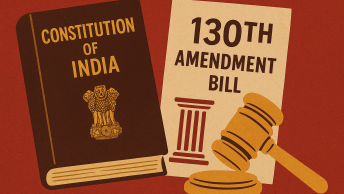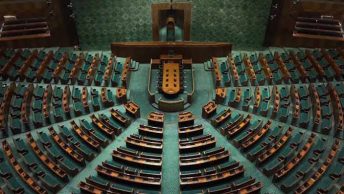In this Article, the authors argues that the Supreme Court’s decision in the State of Tamil Nadu v. Governor of Tamil Nadu case, though driven by democratic urgency, oversteps constitutional boundaries by reading rigid timelines and creating “deemed assent” under Article 200—powers not textually granted. The authors contend that such substantive innovations must come through constitutional amendments, not judicial interpretation, warning that even well-intentioned activism must respect constitutional process and restraint.
On 8 April 2025, the Supreme Court of India (“the Court”) in the State of Tamil Nadu v. Governor of Tamil Nadu (“Tamil Nadu case”), was confronted with an interesting constitutional anomaly: the indefinite sitting of the governor on the 12 allied bills passed by the elected state legislature. In a landmark judgement, the court read rigid timelines to the gubernatorial decision-making power under Article 200 of the Constitution and went a step further to deem legislative assent in cases of unreasonable delays by the executives – creating a legal fiction by invoking Article 142. This decision is appreciated by some scholars for protecting democratic objectives from procedural formalities. However, it raises a pertinent question for constitutional interpretation: can the judiciary, under the guise of purposive interpretation and complete justice, fill constitutional gaps by legislating from the bench? Does this decision amount to “constitutional gap filling” envisaged for the legislature? In this article, we shall attempt to argue that the court’s decision, though well-intentioned and premised on democratic urgency, risks usurping the calibrated principles of separation of powers, federalism and erroneously disregards the intentional textual silences in the constitutional scheme. This decision marks a treacherous departure from the settled principle of constitutional minimalism, creating untenable judicial precedents not in line with both the constitutional purpose of Article 200 and the role of judiciary as envisaged by the constitution.
Article 200: Text, Interpretation and the Decision.
Article 200 gives the governor three mutually exclusive options: the first clause is substantive – it gives the governor an option to choose between one of the three actions – give assent, withhold assent or reserve the bill for the president’s consideration. Immediately after the substantive part, the first proviso mandates a procedure for the governor withholding assent (simpliciter). He must immediately (i.e. “as soon as possible”) return the bill to the legislature with his recommendations. The legislature may accept or reject the recommendations and re‑pass the bill. Notably, once the bill is re‑passed and re‑presented, the Governor “shall not withhold assent”. Further, the second provision envisages the possibility of a bill affecting the jurisdiction of the High Court, in which case the bill shall be reserved for the consideration of the president. It is interesting to note that under the scheme of Article 200, there is no explicit bar on the exercise of veto power by the governor.
As per the judgement, gubernatorial powers cannot be exercised in the form of absolute veto. The court maintained that once the bill is presented, the governor must choose one of the three mutually exclusive options, “as soon as possible” and cannot sit on the bill indefinitely. Simply put, after the judgement if a bill is returned and passed the governor must inevitably assent. This interpretation effectively rendered Article 200 redundant, barring the narrow prospects of second proviso, a bill repassed by the legislature will by default become a law.
Further, the court read the phrase “as soon as possible” to impose concrete time limits on the executive where textually none exist under article 200. The deadline mandates that the governor has a maximum of one month to act on a represented bill and a maximum of three months’ time if acting against the ministerial aid and advice. Consequently, the court turned the intentional silences of the phrase into hard deadlines and even extended the concept of deemed assent. This judicial construction alters the original framework of Article 200. In order to understand the implications of such a line of reasoning, we must revisit the constitutional purpose and intent behind the provision.
The Constitutional Purpose
The Constitution in an interpretative sense is fueled with part philosophy. Therefore, any discussion around the gubernatorial powers or any constitutional provision for that matter is incomplete without appreciating the opinions of the framers of the constitution. The phrase “as soon as possible” was extensively debated in the constituent assembly, but ultimately no time limit was stipulated. This effectively suggests that the framers intentionally used broad terms while consciously avoiding rigid deadlines to leave the governor with reasonable discretionary powers. The court’s decision thereby “reading in” specific timelines for the governor to take actions traverses beyond the idea of textual interpretation and the constitutional purpose behind the provision. As Jeff Goldsworthy observes, textual interpretation and reliance on framers’ intent are distinct, though often complementary, approaches. Textualism is rooted in the ordinary meaning of constitutional language, whereas intentionalism looks to the purposes articulated by the framers. In the case of Article 200, however, both point in the same direction: the framers’ deliberate choice of open-ended language reinforces the textual silence itself. Neither the words of the Constitution nor the framers’ debates provide any foundation for judicially imposed timelines. The silences in the constitution can be interpreted as granting flexible discretion to the governor; it should not be confused with an open invitation for the judges to stipulate specific timelines. Indeed, the framers anticipated that constitutional conventions—drawing on practices like Royal Assent in the United Kingdom—would evolve to discipline gubernatorial discretion. But there is a crucial difference: conventions operate through political accountability, not judicial coercion. By transforming silence into binding deadlines, the Court has converted what ought to have been a matter of evolving convention into a matter of constitutional command. A specific timeline or any sort of condition present on the exercise of power by the governor is essentially legislative in character – it attempts to fill a void intentionally left open, some scholars call this constitutional gap filling. In a democratic setup, inspired by the principle of separation of powers, constitutional gap filling is a prerogative of the legislature through amendments not the courts. As H.M. Seervai puts it “the court has no authority to write into the constitution what the framers did not place there”. Presently, if we look at the interpretative tools, the court applied purposive interpretation (ensuring the governor is not exercising pocket veto) over bare text, rooted in the doctrine of living constitutionalism (protecting the democratic will). Alternatively, a more textual or minimalist approach would beg us to say “the constitution did not set a rigid timeline, so we cannot infer one.” Under classical textualism, the phrase “as soon as possible” entails without “unreasonable delays”, one could presume that the existing remedy in the form of political accountability or a writ of mandamus should suffice. However, this presumption presupposes an acceptance which the constitution does not prescribe.
The Concept of Deemed Assent: Judicial Zeal Gone Too Far?
The Court exercising its power under article 142 (complete justice), declared that the ten allied bills to “deemed to have been assented” by the governor from the date of presentation after reconsideration. This creates a “legal fiction”—a judicially created assumption treated as fact for legal purposes. The Constitution does not spell out such a provision of “deemed assent”, the Court effectively constructed it through their powers under Art. 142. The use of the concept of “deemed assent” has been a subject of sharp constitutional criticism, at the same time, commentators argue that the court fulfilled its institutional responsibility in the face of a democratic urgency. This line of reasoning is at best virtuous, and fails to appreciate the constitutional implications and the demonstrative effect on the future judgements. Critics argue that this amounts to a new model of law making beyond the constitutional text, since Article 200 “nowhere…provide[s] for inaction leading to automatic assent”, the court “crossed a line – from interpretation into innovation”. Further, the concept of “deemed assent” suffers from a risk of invalidation in the face of the doctrine of separation of powers and federalism. By putting a condition in the form of a deadline before the governor and subsequently imputing assent itself, the court misadventures into the legislature-executive domain. Detractors, notably, VP Dhankhar criticised the decision as giving courts a power parallel to “nuclear missile” and warned against “executive governance by judicial orders”.
Moreover, what is further concerning is that this sweeping constitutional overhaul was undertaken by a two-judge bench. Article 145(3) of the Constitution mandates that any case involving a “substantial question of constitutional interpretation” must be decided by a constitutional bench. That such a critical issue – touching the very heart of federalism, separation of powers, and constitutional design was adjudicated by a division bench undermines procedural legitimacy. Beyond procedural irregularities, the deeper concern lies in how the Court transforms soft guidelines into enforceable mandates. This shift in constitutional dynamics becomes clearer when we examine the role of judicially imposed timelines.
Timelines and Judicial Overreach: From Constitutional Guidance to Coercive Constraint
The Court’s defence of its timeline imposition raises serious constitutional concerns. Central to the issue is the distinction it draws between “textual” and “judicial” timelines. Although the Court insists these are non-binding “indicative guidelines,” it simultaneously holds that prolonged gubernatorial inaction beyond 1 to 3 months may render the matter “justiciable”. This reasoning blurs the line between guidance and enforcement, effectively assigning binding consequences to advisory timelines. While the Court stops short of invoking formal deemed assent provisions like Pakistan’s Article 75, it arguably reaches a similar outcome through interpretative sleight of hand. This move, while not unprecedented in Indian constitutional practice, invites scrutiny under the doctrine of judicial overreach—raising concerns about whether the judiciary is stepping beyond interpretation into amendment. Such substantive innovations require the legitimacy of constitutional amendment, not judicial improvisation.
The second infirmity lies in the Court’s contradictory stance on discretionary space. While claiming that flexibility survives because the Governor may justify delays, the judgment simultaneously imposes rigid outer caps – one month for reconsidered bills and three months otherwise – without admitting any exceptions. These caps are derived not from constitutional text but from administrative guidelines like the Sarkaria and Punchhi Commission reports. By elevating these non-binding recommendations to constitutional thresholds, the Court has effectively given them statutory force, despite the Constituent Assembly’s explicit rejection of fixed time limits. Moreover, the Court’s formulation displaces constitutional discretion by making the judiciary the ultimate arbiter of what qualifies as a “reasonable delay.” This judicial substitution of discretion not only contradicts the intent behind the framers’ choice of the phrase “as soon as possible,” but also undermines the principle in Shamsher Singh v. State of Punjab that discretion vests in the Governor precisely where the Constitution is silent.
The third constitutional infirmity stems from the Court’s strained reliance on precedent and historical interpretation. The Constituent Assembly deliberately dropped a proposal to impose a six-week time limit, opting instead for a flexible standard. Dr. Ambedkar made it clear that the phrase “as soon as possible” was chosen to preserve room for deliberation. By reintroducing firm deadlines under the guise of judicial interpretation, the Court disregards this original understanding and revives the very rigidity the framers consciously rejected. Nambudiri, Periyammal and Keisham Meghachandra —the precedents cited—are inapplicable, as they address distinct legal questions unrelated to the discretionary and non-time-bound nature of gubernatorial action under Article 200. The Court’s reliance on these decisions to justify fixed timeframes lacks doctrinal coherence and contextual relevance. None of these cases concern the constitutional architecture of gubernatorial assent, and none justify what is effectively a judicial rewrite of Article 200.
By using Article 142 to grant “deemed assent” to stalled bills, the Court has rewritten the Constitution under the guise of delivering “complete justice.” The comparison to AG Perarivalan v. State of Tamil Nadu is apparently cut-and-paste jurisprudence – that case protected personal liberty, not legislative processes with built-in political safeguards. When governors misbehave, the Constitution provides remedies through impeachment and electoral accountability, but the Court bypassed these mechanisms for judicial supremacy. The Court’s claim that governors can “never” reserve reconsidered bills contradicts Article 200’s text, which explicitly allows presidential referral. Most dangerously, this transforms Article 142 from a constitutional scalpel into a sledgehammer that alters inconvenient constitutional provisions. By creating a “fourth option” for governors through judicial decree, the Court has amended the Constitution without following Article 368’s process – a power grab that betrays constitutional democracy’s foundation.
In the long journey of constitutional evolution, fidelity to the process and structure is not just an empty formality – it is the very essence of institutional legitimacy. When judges from the bench attempt to alter these safeguards under the shadow of urgency, they risk undermining the constitutional oath they are sworn to uphold. Judicial activism must be exercised within the bounds of constitutional restraints, not as a handmaiden for democratic process. If constitutional gaps were to be filled, it must in all cases be through constitutional amendments, not interpretative trenching by the judiciary. For in a republican democracy governed by the rule of law and not by men, even the pursuit of justice must heed to the constitution.
Kushagra Sharma is a Third Year B.A. LLB (Hons.)at National Law University, Delhi,
Azhan Saleem is a Third Year B.A. LLB (Hons.) at National Law University, Delhi
[Ed Note: The piece is edited by Ira Kamat and published by Vedang Chouhan]







https://emoneypeeps.com/network-marketing-lead-generation
Wonderful beat I wish to apprentice while you amend your web site how could i subscribe for a blog web site The account aided me a acceptable deal I had been a little bit acquainted of this your broadcast provided bright clear idea
Your writing is like a breath of fresh air in the often stale world of online content. Your unique perspective and engaging style set you apart from the crowd. Thank you for sharing your talents with us.
Magnificent beat I would like to apprentice while you amend your site how can i subscribe for a blog web site The account helped me a acceptable deal I had been a little bit acquainted of this your broadcast offered bright clear idea